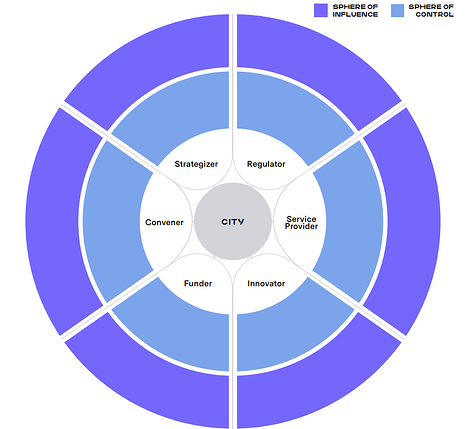In a report that they have published on XPrize, ‘Pathways to Net-Zero Cities: The Role of Cities in Advancing Carbon Removal’, Christiaan Gevers Deynoot, Dylan Marks, Laura Camarut, Nikki Batchelor and Sanjeev Khagram have studied the achievements that can be made as well as the obstacles faced by cities in relation to CDR with a focus on the divergent ways in which cities can make efforts to engage in CDR.
Key takeaways from the report:
-
A persuasive net-zero plan should incorporate the steps taken to remove residual emissions once all mitigation options are pursued to the greatest extent possible. To this end, residual emissions should be quantified and the CDR methods, both nature-based and technological, should be presented.
-
Cities can take on multiple tasks that require them to formulate strategies, pass regulations, provide services, produce innovative solutions, provide funding and bring together various local stakeholders so as to realize their CDR agendas. Cities can choose the activities that they are involved in depending on the local conditions, needs that require urgent action and their capabilities.
-
The actions taken by cities may fall within the scope of their ‘sphere of influence or control’, with the former area covering measures that are directly put in place by the municipality and the latter area including efforts that may be shaped by collaborating with other actors operating at the national and international levels.
-
Cities accord priority to CDR projects that generate ‘co-benefits’ by contributing to the achievement of other sustainable development goals. In doing so, they enable such projects to achieve multiple goals.
-
Notwithstanding the importance of policies applicable at the national and regional levels, cities have crucial policies at their disposal that they can use to improve their net-zero goals and generate other co-benefits.
-
Cities can facilitate the uptake of novel CDR methods as well as the operations of companies, significant steps for the growth of CDR. The latter measures, in turn, can ameliorate the conditions of local start-ups and trigger the emergence of goals that can be achieved in the long-term.
-
The acceptance gained by the perception of ‘cities as carbon sinks’ can alter urban planning policies. Utilizing both nature-based and technological CDR, cities can bolster their CDR capacity and enhance other conditions that relate to ‘local biodiversity, air quality and residents’ quality of life.’
Read the report here: Pathways to Net-Zero Cities: The Role of Cities in Advancing

